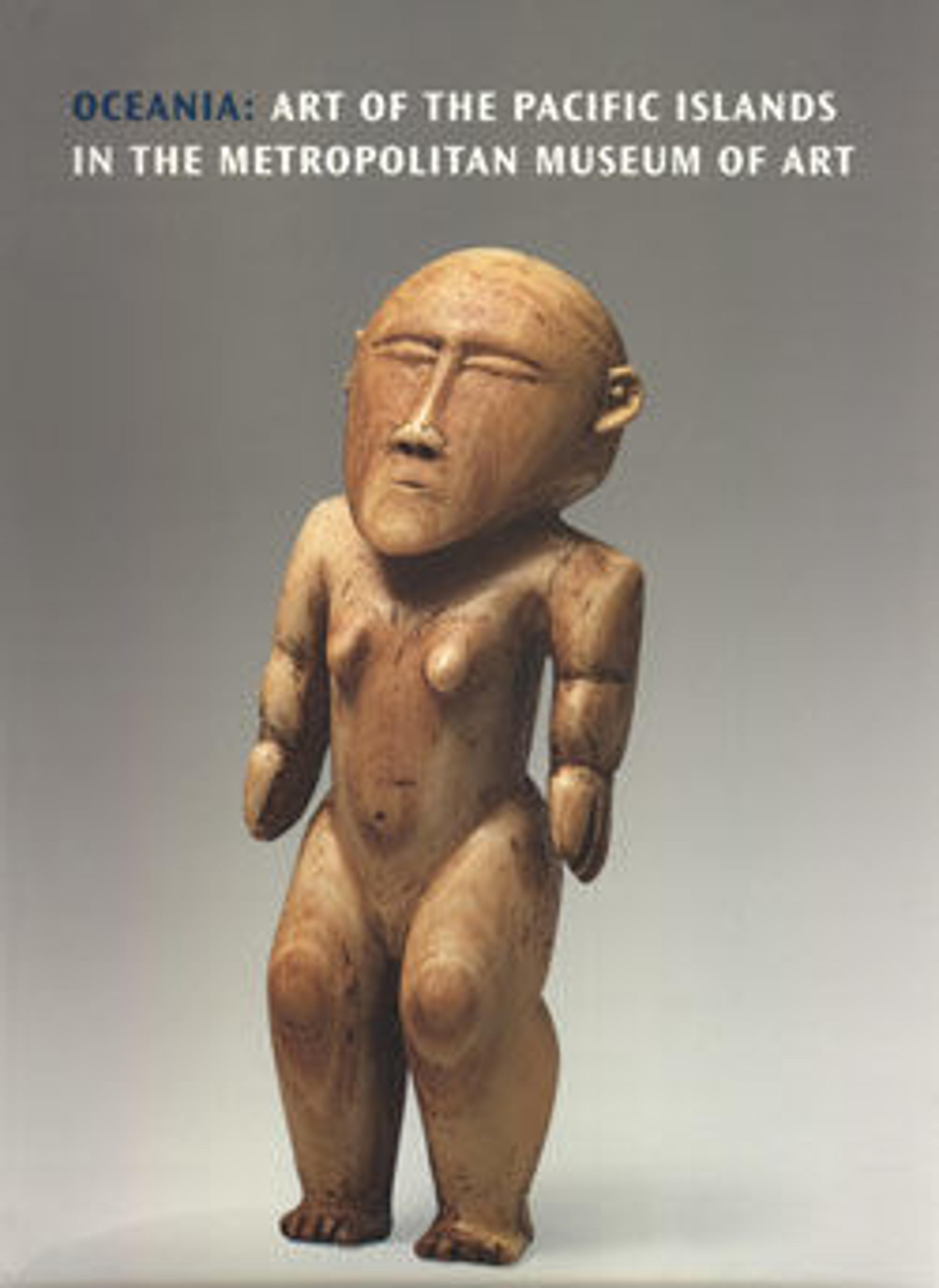Man's Grave Marker (Sunduk)
Lying along the ancient sea trade route between the southern Philippines and Borneo, the islands of the Sulu Archipelago have long been a crossroads of cultures and artistic traditions. Although the Bajau are Muslims, their
art often reflects the influence of earlier indigenous imagery
and occasionally includes human or animal forms ordinarily
prohibited under Islamic religious doctrine.
Like Western gravestones, Bajau grave markers commemorate and mark the resting places of the dead. The markers consist of two components, the kubul, a low openwork fence that surrounds the grave, and the sunduk, an upright element at the center of the enclosure. The form of sunduk reflects the gender of the deceased. Women's sunduk consist of intricately carved openwork planks, while men's are cylindrical and often have a separate base in the form of a ship or stylized animal. Most examples are decorated solely with geometric and floral motifs derived from local Islamic traditions. In rare instances, however, sunduk are carved as human figures that exhibit close stylistic affinities with other indigenous traditions of island Southeast Asia. This exceptional man's sunduk takes the form of a male figure set within a stylized ship. Similar images occur among many indigenous peoples throughout island Southeast Asia and likely depict supernatural rather than physical journeys.
art often reflects the influence of earlier indigenous imagery
and occasionally includes human or animal forms ordinarily
prohibited under Islamic religious doctrine.
Like Western gravestones, Bajau grave markers commemorate and mark the resting places of the dead. The markers consist of two components, the kubul, a low openwork fence that surrounds the grave, and the sunduk, an upright element at the center of the enclosure. The form of sunduk reflects the gender of the deceased. Women's sunduk consist of intricately carved openwork planks, while men's are cylindrical and often have a separate base in the form of a ship or stylized animal. Most examples are decorated solely with geometric and floral motifs derived from local Islamic traditions. In rare instances, however, sunduk are carved as human figures that exhibit close stylistic affinities with other indigenous traditions of island Southeast Asia. This exceptional man's sunduk takes the form of a male figure set within a stylized ship. Similar images occur among many indigenous peoples throughout island Southeast Asia and likely depict supernatural rather than physical journeys.
Artwork Details
- Title:Man's Grave Marker (Sunduk)
- Date:early to mid-20th century
- Geography:Philippines, Sulu Archipelago
- Culture:Bajau
- Medium:Wood
- Dimensions:H. 28 x W. 8 1/2 x D. 42 1/2 in. (71.1 x 21.6 x 108 cm)
- Classification:Wood-Sculpture
- Credit Line:Gift of Charles and Harriet Edwards, 1990
- Object Number:1990.338a, b
- Curatorial Department: The Michael C. Rockefeller Wing
Audio
1762. Man's Grave Marker (Sunduk)
0:00
0:00
We're sorry, the transcript for this audio track is not available at this time. Please email info@metmuseum.org to request a transcript for this track.
More Artwork
Research Resources
The Met provides unparalleled resources for research and welcomes an international community of students and scholars. The Met's Open Access API is where creators and researchers can connect to the The Met collection. Open Access data and public domain images are available for unrestricted commercial and noncommercial use without permission or fee.
To request images under copyright and other restrictions, please use this Image Request form.
Feedback
We continue to research and examine historical and cultural context for objects in The Met collection. If you have comments or questions about this object record, please contact us using the form below. The Museum looks forward to receiving your comments.
